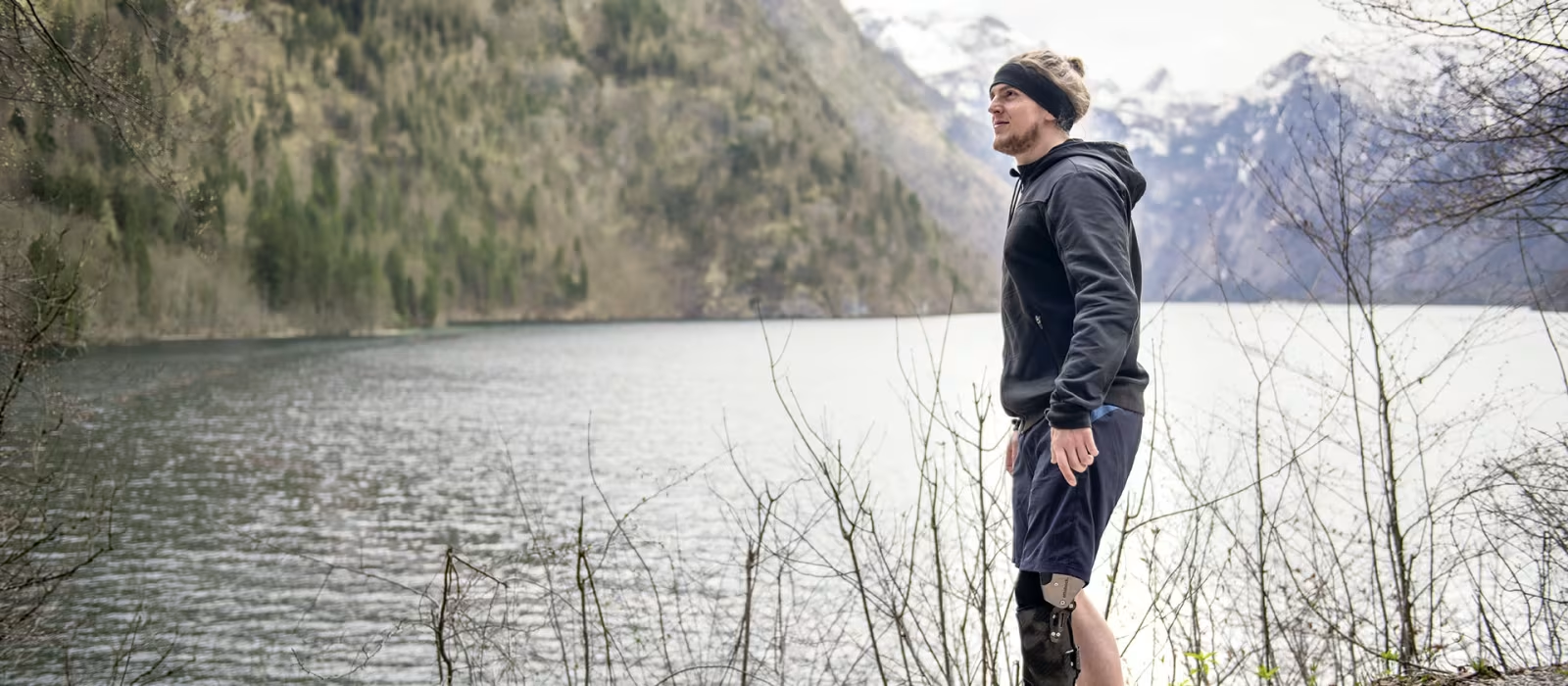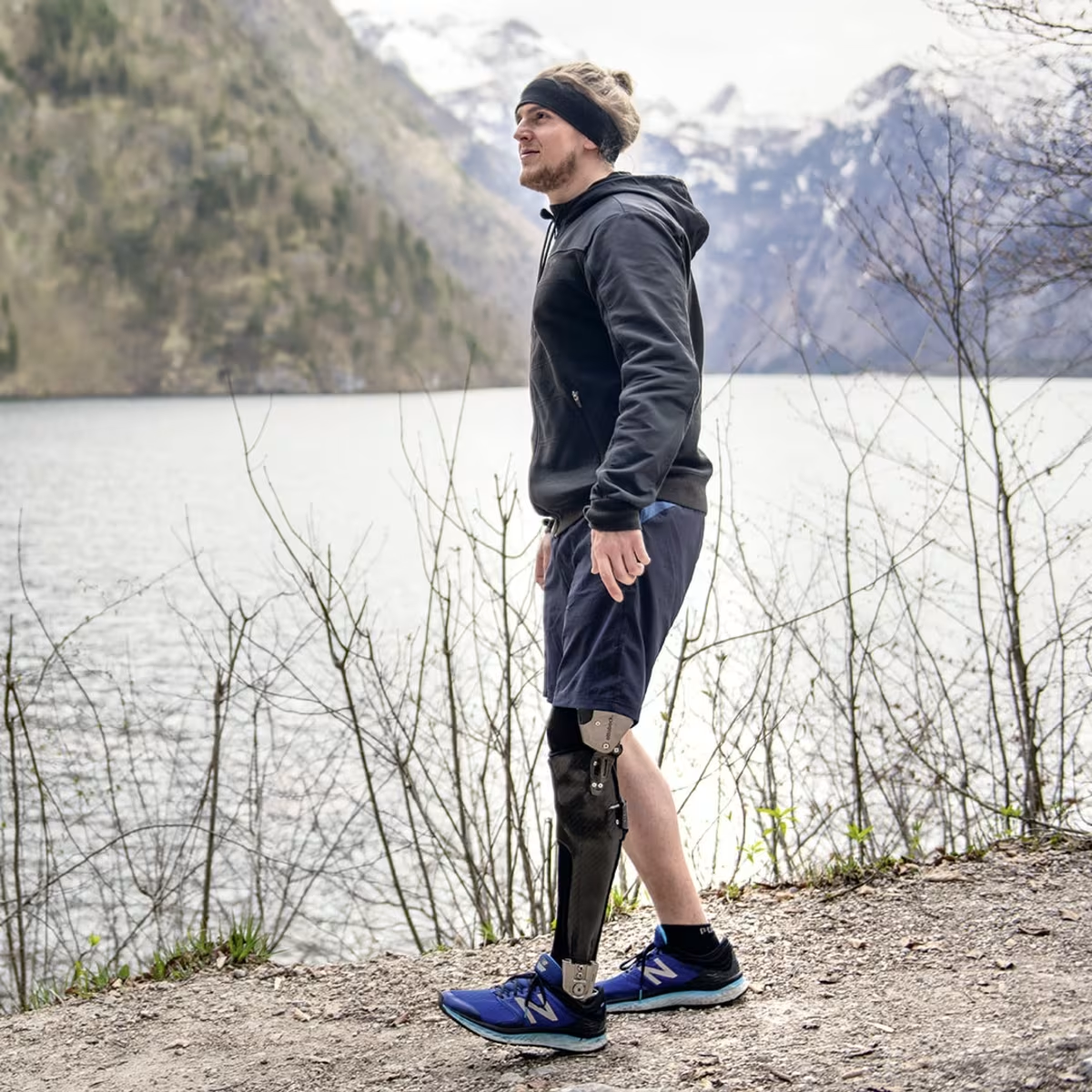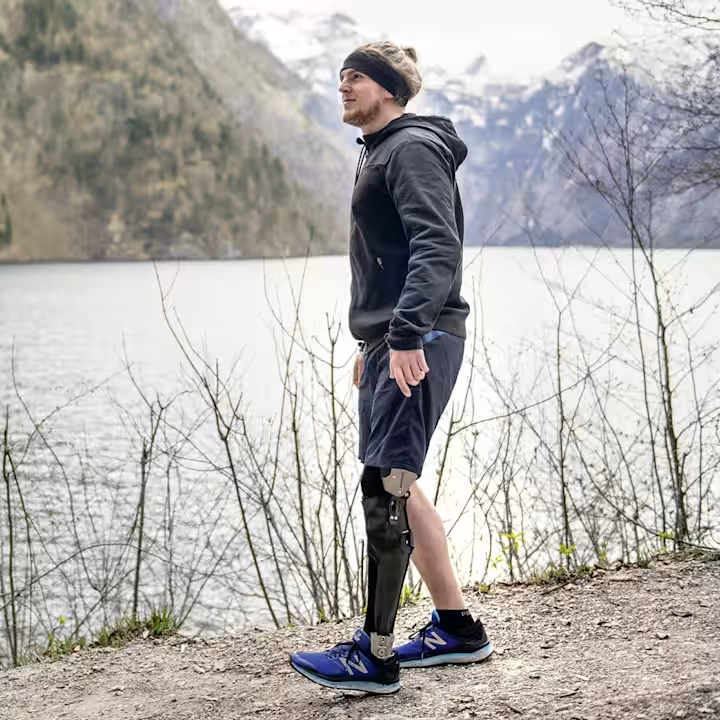


The Future: Orthotronic Mobility Science
Orthotics allow a user to walk, however this has not been without difficulties. For decades orthotic bracing severely limited mobility making walking challenging from physical and emotional perspectives. In recent years, instead of a brace that was always locked, innovations have pushed the limits of mobility, helping people to walk confidently, knowing that their brace would be firm when needed and swing freely when moving forward.
Moving naturally
You may have seen or experienced a hip hike or other unnatural motions that come from walking with a locked knee brace. Ideally the science of orthotics aims to help you walk as naturally as possible, to avoid the kind of short-term struggle and long-term damage that can come from unnatural motion.
In recent years, Stance Control orthoses have changed the way we approach bracing – from a static, always-locked or always-unlocked approach - to a dynamic one that unlocks when needed.
The science of Orthotronics is taking this a step further, creating a sophisticated way to measure walking (or gait) and responding to this with adjustments that facilitate a smooth, more natural motion for the user.
A new approach
The field of Orthotronics was created by applying mechatronics (mechanical, electronic, computer, systems design and other engineering disciplines) to the field of custom orthotics. This result is an entirely new approach to supporting people with limited mobility. Technology now enables people to walk more naturally and efficiently without having to rely on a locked knee joint for stability.
